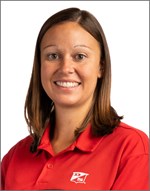Planting Decisions In The Spring Can Make For A Successful 2022
BY Agronomy Team
CREATIVITY AND PLANNING MAY BE THE KEY FOR 2022 HERBICIDE OPTIONS
It may be of little surprise to most reading this that herbicide supplies may be limited in some cases. Obviously, this will depend on location and local ag retailer situations. Overall, it looks to be tight on herbicides. We still need clean fields, so what do we do? The old weed hook and hoe won’t quite get it done. As we gathered information regarding this challenge, one theme seemed to emerge. We may need to be more “surgical” in our approach to weed control. A concept we often use, but this year perhaps it’s even more critical. Here are some considerations:
- Reconsider the product selection to achieve the same end result.
- Residuals can lower the dependence on post-emerge products and perhaps eliminate a second post pass.
- Reduced rates are possible if the label has a rate range. Look at using those lower side of that range.
- Rip up tillage where appropriate can be used in lieu of burndown.
- Reconnect with your ag retailer.
- Reconsider the product selection to achieve the same result. Closely review past weed pressures in each field. If certain weed species are more prevalent in a field(s), then choose a herbicide product which is better suited to control that species. Our point here is not just the obvious, but using products where they are needed the most. For instance, two products control Marestail/Horseweed (Erigeron canadensis), but Product A does a better job. Use Product A in the field that has a bigger problem. In previous years we may have had the luxury of using Product A on all the acres. If you’re going after grasses in burndown, and are short on glyphosate, consider using “fop” and “dim” chemistries such as Clethodim and Quizalofop.
- Residuals can lower the dependence on post-emerge products and perhaps eliminate a second post pass. Certainly, a solid weed control program starts early. This is not the year to skip the pre-emerge or burndown passes. In any year it just makes solid management sense. This year is the case year even more so. Soil-applied chemistries may have a bit better supply than some post-chemistry options. They can do a good job of controlling weeds early in the season and reduce our reliance on the post chemistries. One must be careful here as well. Because they are being substituted, it will put strain on supply here as well. As we have stressed many times previously, use a diversity of modes of action. This will help later in the season and help reduce the possibility of additional resprays.
- Rip up tillage where appropriate can be used in lieu of burndown. The most historical and practical option is certainly tillage. Where appropriate, use this to control early season weeds prior to planting. Wait until that initial flush of weeds hit and then rip them up. This may only be of use in certain fields depending on erosion issues. Other problems would be where there is reluctance to terminate long term no-till.
- Reduced rates are possible, if the label has a rate range. Look at using those lower side of that range. Consider lowering application rates where it is within label recommendations. If the weed species you are targeting can be easily controlled with a specific herbicide, this may be a place to lower rates. If on the contrary it’s a tough-to-control weed, then this may not be the place for lower rates. Just keep in mind the “surgical” concept mentioned earlier. We may need to address our herbicide selections/rates and timing on a field-by-field basis. This will take some management to achieve, but is possible.
- Reconnect with your ag retailer. This is not the time to avoid your local ag input supplier. We encourage you to contact them. Find out what the exact supply is going to be in your growing area and create Plan A and Plan B. Reach out to your Dairyland Seed and Corteva Agriscience crop protection professional for recommendations on your operation as well.
SPRING PLANTING AND TILLAGE DECISIONS
In looking at decisions that farmers make, almost all of them are important. It is my opinion, that when it comes to crop production, two of the most important decisions that farmers make are:
- The day the ground is tilled.
- The day the ground is planted.
Deciding when to work the soil can be a game changer for the crop. If you hurry the decision along and work the soil when it is wet, you end up creating a layer of compaction at the depth of the tillage implement. This layer of compaction, if thick enough, may not allow the soil below to dry out and will remain wet. The layer of soil above the compaction zone may dry out and not allow seeds to germinate or roots to go below the compaction zone. If roots do make it through the compaction zone, they will be low in number and migrate to areas where they can go through -- which is not a good plan for accessing water and nutrients and/or plant standability.
If the weather remains wet after working the soil, the layer of compaction that was created, will stop or slow down water moving through the soil profile. If the soil above that compaction zone becomes saturated, this can lead to increased ponding and/or erosion. If the weather starts to dry out, you may have a layer of dry soil above the compaction zone and wet soil below the compaction zone, which again limits the ability of the plant to bring in water or nutrients in either the wet zone or dry zone.
If you work the ground when it is too dry, you are increasing the rate that moisture is leaving the seedbed. The consequences of low moisture in the seedbed include inhibiting and/or reducing germination and plant growth. Also, by working the soil you are breaking down residue and moving it in the soil profile which can increase the potential for wind erosion.
The day you have the greatest yield potential is the day you decide to plant; any inputs or factors after that will maintain that yield or reduce it. The rule of thumb I was told to follow to make a good seedbed was to work the ground one day and plant the next day allowing 18-24 hours for the soil to dry out and to let the soil “mellow”. If the soil is still too wet to plant, let it dry out and try to plant the next day. If the soil is dry to very dry, work the ground and plant it in the same day. This method allows you to take advantage of moisture in the seeding zone. Running a Roller/Packer or a Drag back over your field after you plant will help seal up the soil and help prevent further moisture loss. The downside of this practice is that you also increase the potential for more erosion in soils that are worked.
In some instances, we can’t find that “just right Goldilocks” moment to put the crop in. As we have experienced in the last few years, waiting to let a field dry out may mean not getting it planted, and we may be better off just getting the crop in. Every situation is different, and there is really no one best way to always have that “just right Goldilocks” moment of soil conditions. In some instances, just closing your eyes and not paying attention to soil conditions may be the only option to getting a crop in.
ALFALFA HEAVING
As we enter spring, alfalfa fields are breaking dormancy and stand evaluations are beginning to take place. The temperature fluctuations and wet soil conditions have caused an increased amount of alfalfa heaving. Heaving occurs when the alfalfa crown is pushed or heaved out of the ground as a result of the expanding and contracting from the freeze and thaw cycles. The likelihood of heaving is greater in areas with wet clay soils, poor drainage, lack of insulating snow cover, and abrupt changes in temperature.

Heaved plants will likely not survive since the root and crown are exposed to cold temperatures and injury from wheel traffic and harvest equipment. Plants with 1.5 inches or more of heaving (distance from the top of the crown to the soil surface) are likely to already have broken tap roots from the heaving process. While evaluating the stand and taking stem counts, do not count the stems from heaved plants.
|
Stem Count per sq ft |
Assessment |
Yield Potential |
Comments and Actions |
|
55 or more |
Good |
100% |
Good stands. |
|
40-55 |
Marginal |
~80-100% |
Decision will depend on operation. Extend longevity by reducing stress: good fertility and insecticides. Factor in feed needs, tolerance for poor stands, budget, etc. |
|
less than 40 |
Poor |
<80% |
Terminate or consider rescue options. Possibly take 1st crop then terminate. |
Alfalfa stands that were seeded last fall can be amended with additional seed, but established stands cannot be interseeded due to alfalfa’s autotoxicity. If you have any questions, please contact your local Dairyland Seed DSM or Agronomist for more information.
 |
 |
 |
 |
 |
| Brian Weller Western Region 507.456.3034 |
Dan Ritter Central Region 219.863.0583 |
Branden Furseth Northern Region 608.513.4265 |
Mark Gibson Eastern Region 260.330.8968 |
Amanda Goffnett Eastern Region 989.400.3793 |
